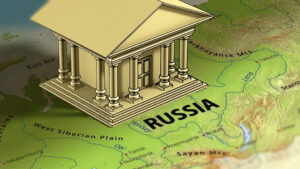
- In Russia, DFAs are defined under the new legislation “On Digital Financial Assets.”
- Sberbank, Russia’s biggest bank and largely state-owned, sold the most DFAs in April.
The Kommersant reported that seven placements of digital financial assets (DFAs) totaling roughly 1 billion rubles ($13 million) were done in Russia last month. While this market is currently relatively tiny. Big initiatives may be anticipated by the end of the year, according to experts cited by the business daily.
In Russia, DFAs are defined under the new legislation “On Digital Financial Assets.” That took effect at the beginning of 2021. These represent “digital rights” to securities or utility tokens. And need an issuing body, in contrast to decentralized cryptocurrencies, which have yet to be properly regulated.
Trying to Lessen Impact of Sanctions
Sberbank, Russia’s biggest bank and largely state-owned, sold the most DFAs in April, followed by Alfa-Bank, Russia’s largest private bank. Atomyze, which focuses on the tokenization of commodities, the fintech startup Lighthouse, and the more recently licensed Masterchain are all operators of DFA platforms allowed by the Bank of Russia.
Placements reached a total of 2 billion rubles ($26 million) in March. Less than a year after the central bank-approved organizations began issuing DFAs. Most experts surveyed by Kommersant remain cautious despite the dramatic gain the next month.
According to Roman Nekrasov, co-founder of Encry Foundation, which represents Russian IT enterprises, current methods such as corporate bonds may be used to generate funds. Moscow’s invasion of neighboring Ukraine resulted in unprecedented Western sanctions that significantly limited Russia’s ability to access global financial markets.
Russian authorities have been making moves to increase the usage of digital assets, such as allowing crypto payments in international commerce and creating a digital ruble, in an attempt to lessen the impact of the sanctions.














